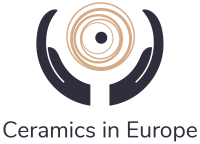Database
An interactive way to know about all Ceramic stakeholders of Central Europe
An interactive way to know about all Ceramic stakeholders of Central Europe
The Database is an organised collection of data and information that are stored and can be accessed digitally. In other words, the database is an organised collection of information. In Ceramics in Europe, Interactive Database stores and displays information of more than a thousand Ceramists, Associations and Public Authorities in Europe.
The database can be found in the Shareholder Information toolbar. At this toolbar, users can locate Ceramists Database and Stakeholders Report from the drop-down menu.
Ceramists Database presents an interactive map where users are able to locate Business, Museum & Galleries, Education Institutions, Related Subjects, Public Administration, Associations, and Projects Partners in Europe. Two styles of maps, street maps and satellite imagery, can be chosen on the right side above the sidebar menu depending on users’ preferences to locate the address. Another interesting feature from this interactive map is that users can see the 3600 images of the surrounding on the map. To use this function, hover the cursor to the Pegman icon, it is in the upper left corner of the map under the zoom in and zooms out symbol. Drag the Pegman onto the map and place it somewhere to snap a 3600 image within the map. Once, it is set down, a view of 3600 will be pop-up.
There are about 1.000 places that can be located when surfing through this interactive map. Other methods to locate private ceramic businesses, public authorities, SMEs, ceramic associations or other entities are by typing the address,atitude or longitude, title, city, state, country or postal code in the search box and using the five selections that are available under the search box. The five selections are Category, Country, Region, City, or Title. At the bottom, there is a form where users can contact Ceramics in Europe’s admins to request inclusion, deletion or changes in the database where they found the information about themselves there.
By default, all the information about the name, category, country, city, website and address are displayed in alphabetical order.
On Stakeholders Reports, under the same toolbar, the results of the research made for private sectors, student sectors, and a comparison of sectors can be obtained here. These interactive reports let users go through graphs and charts with a filter function that can be customised. These reports show the results of research carried out among sectors entities in a total of six countries. The results in these reports are presented in an interactive form and are default displayed for all subjects, but it is also possible to select the research results only for a single country.
Under the Private Sector report, for selected questions, it is possible to compare the results among individual countries. It was necessary to find out the whole situation and position of entities in the private sector, so the report focuses on the evaluation of several areas to obtain a comprehensive view. In Student Sector and Comparison of Sectors reports, it is possible to compare the results among sectors, such as cultural institutions, educational institutions, private sector, and public sector in selected countries for selected questions.
Want to know more about the database? let’s see here https://www.ceramicsineurope.eu/ceramists-database/
